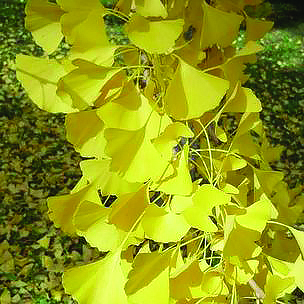Despite several weeks of unseasonably warm, sunny weather and little rain, the trees of the Middle Peninsula have put on a spectacular show of color with the brilliant reds of the maples and deep burgundies of dogwoods and fiery scarlets of black gums (also called Black Tupelo or Sour Gum) providing a striking counterpoint to the more common oranges and golds of oaks and hickories.
Possibly the most enchanting and breathtaking fall color is that of the luminous, golden leaves of the Ginkgo biloba. The ginkgo, or maidenhair tree, is considered a “living fossil.” It has existed virtually unchanged for 180 million years, meaning that during the age of the dinosaurs it looked much as it does now. Ginkgo biloba is the only one of the five known seed groups that contain just one species.
The ginkgo once grew over much of the globe, but eventually survived only in China. Discovered and shipped to Europe and America in the mid-18th century for use as an ornamental tree, ginkgo quickly naturali...
To view the rest of this article, you must log in. If you do not have an account with us, please subscribe here.

